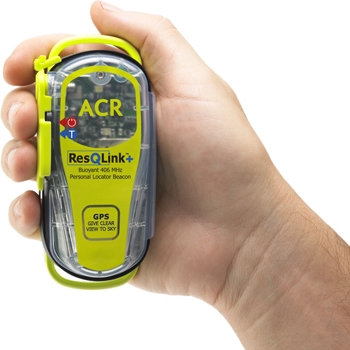GPS Units - Accessories
Autopilots - Marine
Cameras
Chart Plotters
Communications
Dash Cameras
EPIRBs & PLBs
Fitness, Sports & Golf
Fishfinders
Garmin Fitness
GPS-Fishfinders
GPS-GMRS Radios
Maps & Software
Hiking & Handheld GPS
Wearables
Laptop & Tablet GPS
Marine Electronics
Motorcycle Units
Network Systems
Off Road GPS
Radars
Safety Equipment
Starlink Mounts
Stereos & Speakers
Top Choice Products
Tracking Devices
Trolling Motors
Truck & RV GPS
VHF Radios
Accessories
Garmin Accessories
Marine Accessories
Transducers
Actisense
B&G
BilgeBuddy
C-Map Charts
CMOR Charts
Flir Thermal Imaging
Fujinon Marine Binoculars
Furuno Marine Electronics
Fusion Stereos
Garmin GPS
Icom Marine Radios
JL Audio
KVH Satellite TV
Lowrance Electronics
Lumishore LED Lights
Magellan GPS Systems
Navionics Charts
Ocean Signal
Pelican Lights
Poly Planar Stereos
Raymarine Electronics
Scanstrut
Seaview Mounts
Shakespeare
Simrad Marine
Sionyx
Si-Tex Marine Electronics
Standard Horizon
Superior Life Saving Life Rafts
USGlobalSat
Veratron
Vesper Marine
Should You Have a Marine Emergency Beacon?
Marine emergency beacons are vital boating safety tools. Beacons combine a location sensor or GPS transceiver with a transmitter that broadcasts your map coordinates on reserved frequency channels. Fully compliant beacons broadcast at 5 Watts to the COSPAS/SARSAT satellite constellation, which is provided as a public service by international treaty. Competing services use the SPOT protocol and broadcast to commercial satellite constallations at a lower power level. Beacons make it easier for an airborne rescue search time to locate campers or boaters, and fully rated ones broadcast a strong enough signal to allow rescuers to triangulate, even if they aren't broadcasting GPS coordinates.
Since the 1980s, emergency beacons are estimated to have assisted search and rescue personnel locate more than 28,000 people in over 7,000 distress environments, ranging from getting lost while hiking, boating accidents, forest fires and mudslides. The primary aim of the rescue beacon is to allow recovery of people in dangerous situations in the "golden day" - a window of 24 hours where people have the likeliest chance of being recovered alive, and with minimal injuries or long term health effects from exposure.
Nearly anyone who spends significant time outdoors, whether on a boat, camping, offroading, skiing or doing extreme sports, like rock climbing, should consider having a rescue beacon on their gear. A rescue beacon might not be needed for years, or at all. However, like a first-aid kit, it's one of those items that when you need it, there's not really an opportunity to get another one if you don't have one on you.

Many professions - such as park rangers, and smokejumpers and wildfire control specialists, carry rescue beacons as part of their jobs. Very few of them go without one when off-duty in places where they'll be useful. One driver in Alaska was saved by a rescue beacon. While driving home, his truck spun out on black ice during white-out conditions, and ended up upside down in a slough; the resulting snowstorm buried the truck; the injured driver was able to get his emergency beacon out of the glove compartment and put it outside the truck to broadcast.
The US Navy attaches rescue beacons to life preservers used for abandon-ship drills, and many service personnel buy one of their own, just in case. In the civilian market, rescue beacons are commonly owned and carried by small-aircraft pilots, and of course, fishermen and boaters. They're used by both freshwater and marine boaters, although they're more common with near coastal and far-coastal vessels.
While it's obvious that rescue beacons are useful lifesaving devices, there are some choices to make. First, if you're going out on a boating trip with children, they should get a rescue beacon that automatically activates on contact with the water, and it should be fastened to their gear in a way that they can't un-do. Marine emergency beacons are a little large and a little bulky...and you should check the batteries regularly. For older children, focus on giving them a beacon that they can turn on and off manually, and drill them in the proper procedure; it's important to emphasize that these beacons aren't toys. It's best to give one beacon to the most responsible person working with the children, like a troop leader on a camping trip.
If your group or boat crew has a dedicated emergency response coordinator, that person should have the primary emergency rescue beacon, while the second beacon on board should be assigned to someone who has a different physical location on the boat, and that both of them have their beacons close at hand to where they do most of their work.
If your boat is large enough to have a life raft, the life raft should have an emergency beacon as part of its standard loadout, along with desalinization packs and a weather services emergency radio.
Emergency rescue beacons compliant with current NOAA and Coast Guard regulations broadcast on 406 MHz. Older beacons, broadcasting on 121.5 and 243 MHz bands have been discontinued as of 2009, in accordance with international regulation. (The other frequencies were deprecated due to cross talk and interference with commercial radio bands in some parts of the world.) Make sure that your emergency beacon broadcasts at 406 MHz, or replace it if it doesn't.
Because your Emergency Beacon will, in the case of boats and aircraft, have a unique designation tied to your boat or plane registry, be sure to register it with NOAA at their registration page to get the most out of your beacon.












